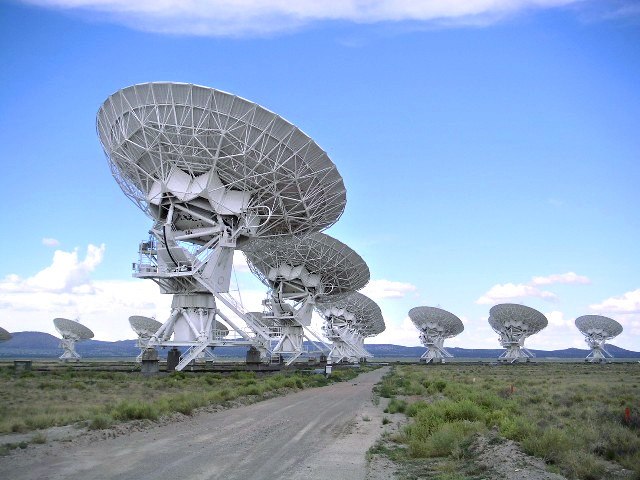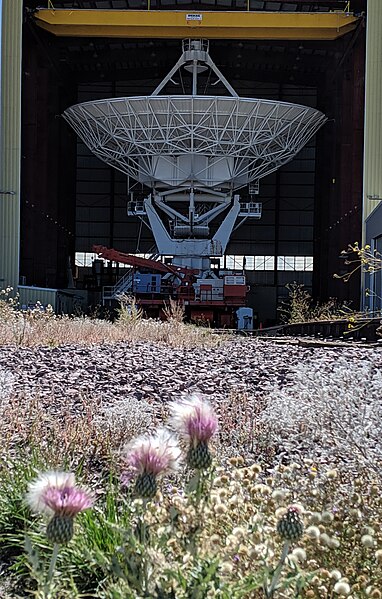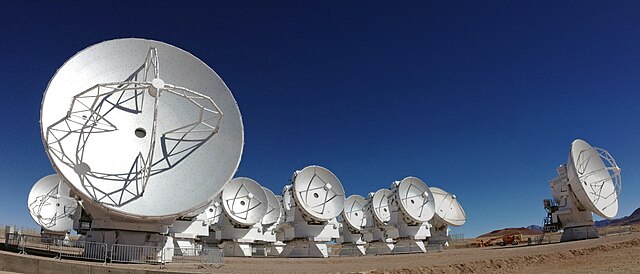The Karl G. Jansky Very Large Array (VLA) is a centimeter-wavelength radio astronomy observatory in the southwestern United States. It lies in central New Mexico on the Plains of San Agustin, between the towns of Magdalena and Datil, approximately 50 miles (80 km) west of Socorro. The VLA comprises twenty-eight 25-meter radio telescopes deployed in a Y-shaped array and all the equipment, instrumentation, and computing power to function as an interferometer. Each of the massive telescopes is mounted on double parallel railroad tracks, so the radius and density of the array can be transformed to adjust the balance between its angular resolution and its surface brightness sensitivity. Astronomers using the VLA have made key observations of black holes and protoplanetary disks around young stars, discovered magnetic filaments and traced complex gas motions at the Milky Way's center, probed the Universe's cosmological parameters, and provided new knowledge about the physical mechanisms that produce radio emission.

Very Large Array
One of the 28 radio telescopes undergoing maintenance in "The Barn"
The Bracewell Radio Sundial on the VLA walking tour, seen from the south. Named for Ronald N. Bracewell, this sundial marks on the ground positions of the shadow of the central sphere (the gnomon) at different times of day and times of year. The shadow on Dec 22, 2017 falls very near the winter solstice line and the 1:00 PM (solar time) mark. The other two lines of markers north of the gnomon are for the equinoxes and the summer solstice. Additional lines of markers south of the gnomon mark positions of "shadows" of the radio sources
The cross rail track structure of the VLA, including an empty antenna mount station on the right (the three concrete piers that the antenna's triangular base mounts to)
Radio astronomy is a subfield of astronomy that studies celestial objects at radio frequencies. The first detection of radio waves from an astronomical object was in 1933, when Karl Jansky at Bell Telephone Laboratories reported radiation coming from the Milky Way. Subsequent observations have identified a number of different sources of radio emission. These include stars and galaxies, as well as entirely new classes of objects, such as radio galaxies, quasars, pulsars, and masers. The discovery of the cosmic microwave background radiation, regarded as evidence for the Big Bang theory, was made through radio astronomy.
The Karl G. Jansky Very Large Array, a radio interferometer in New Mexico, United States
Chart on which Jocelyn Bell Burnell first recognised evidence of a pulsar, in 1967 (exhibited at Cambridge University Library)
The Atacama Large Millimeter Array (ALMA), many antennas linked together in a radio interferometer
An optical image of the galaxy M87 (HST), a radio image of same galaxy using Interferometry (Very Large Array – VLA), and an image of the center section (VLBA) using a Very Long Baseline Array (Global VLBI) consisting of antennas in the US, Germany, Italy, Finland, Sweden and Spain. The jet of particles is suspected to be powered by a black hole in the center of the galaxy.







